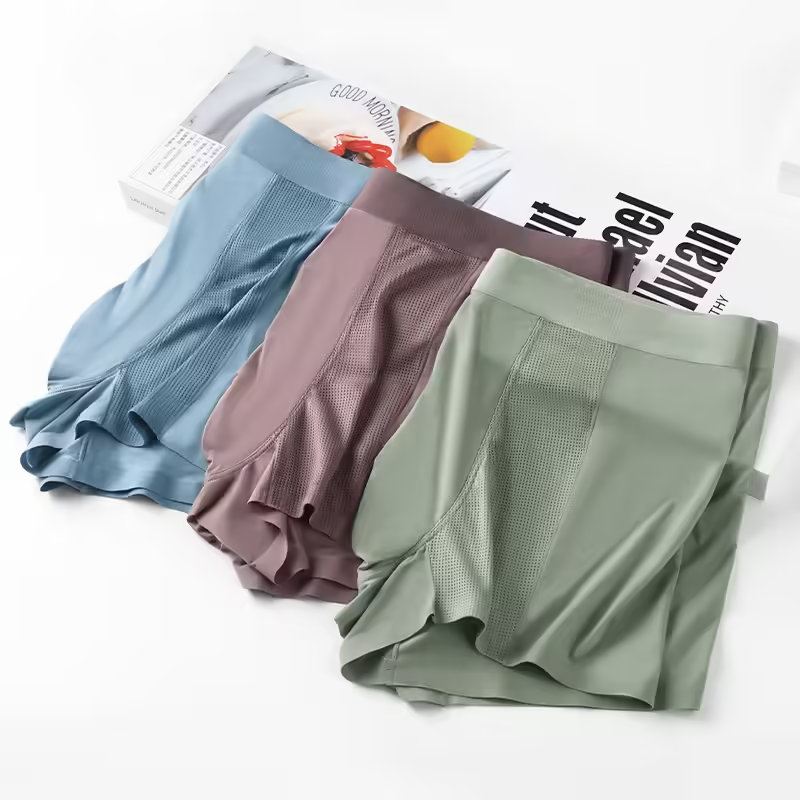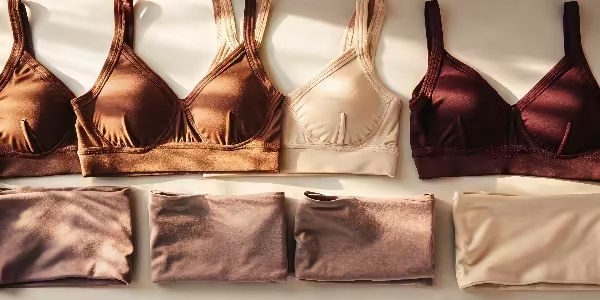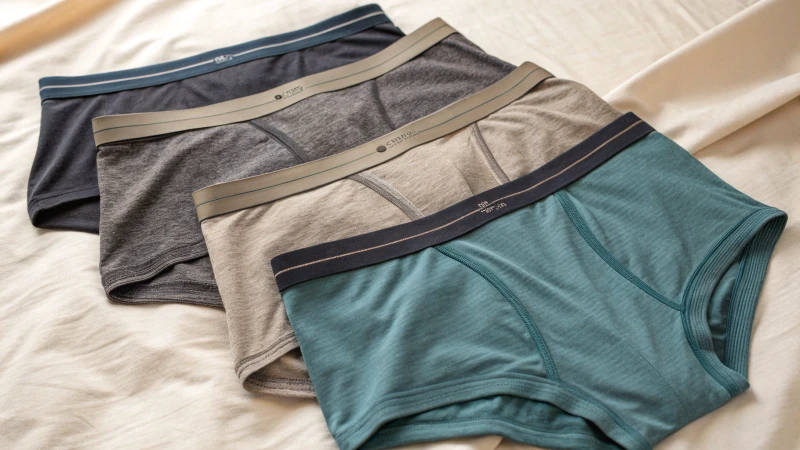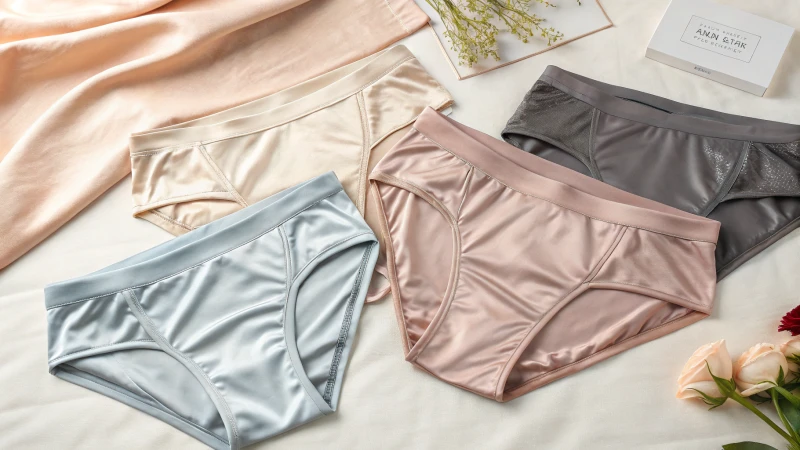
Have you ever stopped to think about how our underwear choices say a lot about us? It’s interesting and sometimes unexpected that certain styles hold cultural meaning and social rules. So, which kinds of underwear are actually seen as forbidden?
Different cultures and situations have their own views on taboo underwear. Many people think cross-gender underwear, erotic shapes or very revealing styles are inappropriate. These taboos show what society thinks and how people see themselves. Understanding these taboos helps us learn about societal norms.
As I travel through the world of fashion, I learn that underwear taboos often come from cultural norms and personal beliefs. Once, I attended a gathering where someone had bright, playful boxer shorts under a tailored suit. This choice caused laughter and brought people together, but it also made me think about how some choices challenge traditional views. Some styles, such as cross-gender underwear, very revealing designs or ones considered too provocative, often surprise people. These taboos reveal not just what we wear but also the values and histories behind our choices.
Cross-gender underwear is often considered taboo in many cultures.True
Cultural norms frequently dictate that underwear should align with gender identity, making cross-gender styles socially unacceptable in various societies.
Erotic underwear designs are universally accepted across all cultures.False
Contrary to this claim, erotic underwear is often seen as inappropriate or taboo in many cultural contexts, reflecting varying societal values.
What Cultural Factors Influence Underwear Taboos?
Do you ever think about how the culture around you affects your ideas about underwear? It's interesting and can surprise you! Let's look closely at the beliefs and rules that say what is okay or not okay about our private clothing.
Religious beliefs, gender norms, historical events, regional customs and media portrayal often affect underwear taboos. These elements really shape what society thinks is acceptable or taboo in various cultures. They probably reveal deeper insights into shared values and practices. Different cultures may have unique views. Society’s perceptions often depend on these cultural factors.

The Role of Religion and Spirituality
Understanding the taboos around underwear goes beyond books. It explores our cultures deeply. When I first studied this topic, I felt shocked by how deeply these ideas are rooted in us. These beliefs connect strongly with our own experiences.
Religious beliefs profoundly shape perceptions of modesty and appropriateness in many cultures. For instance, in conservative communities, certain styles of underwear may be considered sinful or disrespectful.
In contrast, more liberal societies might embrace diverse styles, including erotic and revealing designs. Such differences can lead to taboos surrounding underwear that vary widely based on religious contexts.
Exploring the impact of religion on underwear taboos can reveal much about societal values and norms. You can learn more about these influences through resources like cultural studies1.
Gender Norms and Expectations
Thinking about my own clothing, I often feel the pressure of gender rules. People see men's underwear as practical, like boxer briefs. Women's underwear often appears more delicate and sensual. This view divides what is right for each gender.
Gender roles significantly influence underwear taboos. In many cultures, men's underwear is often viewed through a lens of practicality, whereas women's underwear may be associated with sensuality and fashion.
This division creates various expectations, leading to distinct taboos surrounding types of underwear that are deemed appropriate for each gender. For instance, cross-gender wearing of underwear may be frowned upon in traditional settings.
I felt curious and confused when I saw people wearing cross-gender underwear at a fashion event. This was disapproved in strict places, but it felt like free self-expression. Understanding these dynamics helps illustrate how societal norms dictate personal choices and self-expression. Further insights can be found in studies related to gender norms2.
Historical Contexts
Looking into history, I found the Victorian era focused on modesty. I laughed at how they disliked revealing styles then, while today we have a wide range of choices.
Historical perspectives also play a crucial role in shaping current taboos surrounding underwear.
For instance, during the Victorian era, modesty was paramount, and any revealing underwear was shunned.
In contrast, modern times have seen the rise of various styles that challenge these norms.
Old standards still affect how we think now; by examining past societal standards we can better understand how these historical factors continue to influence contemporary views on underwear.
To explore more, check out fashion history3.
Cultural Variations and Regional Differences
I have traveled to many places, each with its own views on underwear. Some Asian cultures love bright and patterned underwear, seeing it as lucky. How vivid! Meanwhile, Western areas often like simple designs showing different taste values.
Cultural differences significantly impact how underwear is perceived around the world. In some Asian cultures, for example, brightly colored or patterned underwear may be embraced as a symbol of good luck.
Meanwhile, in Western countries minimalistic designs often dominate the market reflecting different aesthetic values.
These unique customs lead to various taboos based on local beliefs; a comparative analysis of these variations can be found in articles related to cultural practices4.
Societal Influences and Media Representation
Finally let us discuss media; advertisements changed how I felt about underwear beauty and allure. They often warp our idea of what is okay causing shame about some styles.
Knowing how media changes our views helps us understand social pressures on personal choices better; understanding media's role allows for a more nuanced view of societal influences on personal choices.
You can explore the intersection of media and cultural norms through links about media studies5.
When I think about how culture shapes views on underwear taboos I see our connected experiences; this journey grew my knowledge and respect for our rich human diversity.
Religious beliefs can dictate underwear styles in conservative cultures.True
In conservative societies, certain underwear styles are viewed as sinful due to religious beliefs, shaping cultural taboos around intimate apparel.
Men's underwear is often seen as practical, unlike women's.True
Cultural gender norms typically classify men's underwear as functional, while women's is often associated with fashion and sensuality, leading to distinct taboos.
How Do Underwear Taboos Vary Across Different Societies?
Have you ever wondered why different cultures think about underwear so differently? It is amazing how something so personal mirrors deep values and customs in society. Let's explore these interesting differences together.
Underwear taboos differ greatly in different cultures. Gender roles, religious beliefs and history all shape these taboos. They shape ideas of what is modest and appropriate. People see these differences in clothing as tied to what society values. They are deeply linked.

The Cultural Meaning of Underwear
Underwear is more than just clothes; it shows our identities and cultures. I remember my first visit to Japan when I found a tiny shop with beautiful silk kimonos and delicate underwear. The shopkeeper told me how some underwear styles connect to ideas of modesty and beauty. This conversation opened my eyes to their deep cultural importance. In traditional societies, wearing revealing or modern underwear might seem rude, while in others, bold designs show personal freedom. This difference highlights the interesting mix of tradition and modern life we see daily. Global fashion trends mix these influences well and remind us that what we wear underneath really reflects our values.
Gender and Underwear Rules
Gender ideas have a big impact on underwear rules. Thinking about my experiences, I see how talks about men's and women's underwear often show hidden social pressures. Men's underwear usually focuses on usefulness and comfort, such as boxers or briefs. On the other hand, women face a wide range of styles, from simple to fancy, reflecting societal expectations of femininity.
Here’s a comparative table illustrating these differences:
| Gender | Common Styles | Taboo Elements |
|---|---|---|
| Male | Boxers, Briefs | Cross-gender styles |
| Female | Thongs, Boyshorts | Overly revealing designs, erotic styles |
I personally felt this pressure to follow the norms; wearing something seen as ‘for women’ once made me doubt myself—would others judge me? Learning about this topic helped me understand gender identity and the hidden rules around it. For more on gender in fashion, you might like gendered fashion norms6.
Religion's Impact on Underwear Choices
Religion also greatly influences underwear choices. I remember a wedding where the bride wore a stunning traditional dress with special religious undergarments. This made me realize that some underwear types may be needed or avoided due to religious teachings on modesty.
For instance:
- In Islam, modesty is very important and directly affects underwear choices.
- In Hinduism, some undergarments are considered lucky and worn during important ceremonies.
These beliefs mix deeply with cultural habits, showing that our clothing choices—even underwear—are shaped by more than just personal tastes. If you want to explore further, check out religious attire customs7.
Historical Views on Underwear Rules
Studying history reveals how past events molded our views on underwear. Strict clothing rules in the Victorian era focused on modesty with many layers—like armor against judgment—while in the 1960s, a spirit of freedom took over and underwear styles became bold, reflecting self-expression.
These changes help me see our progress and how much more growth is possible in expressing ourselves through our clothes. If you are curious about fashion history and changes in underwear, I suggest exploring fashion history insights8.
Underwear reflects cultural values and societal norms.True
Underwear is more than functional; it symbolizes cultural beliefs about modesty and identity across different societies.
Men's underwear styles prioritize functionality over aesthetics.True
Typically, men's underwear focuses on comfort, while women's styles often emphasize decoration and fashion, reflecting gender expectations.
What Are the Psychological Implications of Wearing Taboo Underwear?
Have you ever felt excitement when wearing clothes that people think are not allowed? This is an interesting adventure into our identities and the rules society sets. It shows how we see ourselves. Let us explore this captivating side of fashion together.
Taboo underwear often brings complicated feelings. People might feel powerful, nervous or learn about themselves. Society's rules, personal identity and emotions interact with clothing choices. Clothing choices influence emotions.

Understanding Taboo Underwear
Wearing taboo underwear stirs up many emotions - strength, worry and a deep path to discovering oneself. Clothes under our outfits surprisingly reflect how we view our identities. I recall the first time I wore something unusual. The experience was exciting yet terrifying. Slipping on those daring pieces felt like embracing a hidden part of myself.
Taboo underwear challenges usual beliefs, not just fashion. Think of cross-gender items, bold designs or styles seen as improper for certain ages. The thrill of something unexpected attracts me to these pieces. They invite emotional reactions. Many people, including me, find these pieces appealing for the feelings they awaken.
Wearing taboo underwear offers self-expression. These choices help explore identities and desires deeply. Each piece feels like rebelling against norms, creating a strong personal bond. Psychological effects vary based on personal history, culture and society. Curious minds can learn more through gender expression9.
Societal Norms
Cultural norms rule what seems acceptable or taboo. Choosing such underwear often clashes with these standards. This scenario may bring a mix of freedom and anxiety.
I’ve experienced this struggle; wanting to showcase individuality but fearing judgment can be overwhelming. Understanding these dynamics is key in exploring emotions about taboo fashion. For more, visit emotional responses to clothing10.
| Emotion | Description |
|---|---|
| Exhilaration | A feeling of freedom and empowerment |
| Anxiety | Worry about societal judgment |
| Liberation | A sense of breaking free from constraints |
| Curiosity | Desire to explore one's identity |
Self-Esteem and Confidence
Wearing taboo underwear greatly affects self-esteem. Personally, embracing my style this way boosts my confidence. However, not everyone feels the same - some feel less confident due to fear of judgment.
Studies show clothing choices shape self-view and how others see us. Taboo underwear offers a private space for rebellion, letting us feel authentic.
Factors Affecting Self-Esteem:
- Personal Experience: Past acceptance or rejection impacts feelings now.
- Cultural Background: Different cultures have varied views on modesty.
- Social Circle: Reactions from friends and community affect confidence.
Learn more about clothing and self-view through psychology of clothing choices11.
Fetishism and Taboo Underwear
Fetishism offers insight into the psychological side of wearing taboo underwear. Some fabrics or styles spark strong arousal or pleasure, mixing clothing with desires.
This exploration provides safety and expression, revealing hidden aspects of sexuality. The link between clothing and sexuality reveals complexities around taboo underwear.
Wearing taboo underwear can enhance self-esteem and confidence.True
Many individuals report feeling empowered and unique when wearing taboo underwear, which can boost their self-esteem.
Taboo underwear has no psychological effects on individuals.False
Contrary to this claim, wearing taboo underwear often evokes complex emotions and psychological responses, influencing identity and self-perception.
How Can You Navigate Underwear Choices in Sensitive Environments?
Picking the right underwear for sensitive situations feels overwhelming, but it doesn’t need to be! I share my insights on how I chose options that focus on comfort and health.
Choose underwear for places where skin is sensitive by picking breathable fabrics such as cotton or bamboo. Select styles that fit you comfortably. Keep clean habits for hygiene. This way, skin stays comfortable and irritation becomes very minimal. Keeping irritation low is important.

Understanding Sensitivity in Underwear Choices
When sensitive skin first bothered me, I learned to watch the small details, like what I wear underneath. The right underwear really changes how you feel. Let me help you on this path.
Choosing underwear for sensitive skin begins with knowing your body’s needs. This is personal. Once, I wore lovely lace underwear for a special event. It seemed perfect but left me uncomfortable, moving around a lot. Comfort, skin sensitivity and hygiene became really important.
Choosing the right fabrics can make all the difference. Natural materials such as cotton and bamboo are highly breathable and less likely to irritate sensitive skin. For those who sweat or have discharge concerns, moisture-wicking fabrics can help keep you dry and comfortable.
It's also crucial to consider the style of underwear. For example, boy shorts and bikinis offer more coverage, which can be beneficial for preventing chafing. On the other hand, thongs might not be suitable for everyone if comfort is important. Learn more about fabric choices12.
Recommended Fabrics for Sensitive Environments
| Fabric Type | Benefits | Considerations |
|---|---|---|
| Cotton | Soft, breathable, hypoallergenic | May retain moisture if not changed frequently |
| Bamboo | Moisture-wicking, antibacterial | Less durable than synthetic fabrics |
| Modal | Soft, breathable, retains shape | Can be blended with synthetics |
| Microfiber | Lightweight, quick-drying | Can cause irritation if too tight |
| Merino Wool | Temperature regulating, moisture-wicking | Can be pricey, may require special care |
These fabrics help me feel better about my choices. See more styles of underwear13.
Hygiene Practices in Sensitive Situations
Caring for hygiene is very important in sensitive situations. Here are my habits:
- Frequent changes: I carry extra underwear for moments when I’m sweaty or uncomfortable.
- Washing: Mild detergent with no dyes or scents has really lessened my irritation.
- Storage: I keep my underwear clean and dry to avoid bacteria growth.
- Fit matters: A good fit changes everything! Snug but not tight pairs reduce discomfort for me.
By following these hygiene practices, you can ensure that your underwear choices contribute positively to your well-being. See more hygiene tips14.
Styles to Avoid in Sensitive Environments
Some styles are risky with sensitivity. Here’s why:
- Lace or harsh materials: These irritate the skin quickly; trust me.
- Tight designs: They trap moisture and heat, creating discomfort.
- Synthetic blends: These often lack airflow and have caused skin issues for me.
Listening to my body is my top advice for comfort and health. See more suitable styles15.
Cotton underwear is ideal for sensitive skin.True
Cotton is soft, breathable, and hypoallergenic, making it suitable for those with skin sensitivities.
Thongs are recommended for sensitive environments.False
Thongs may cause discomfort and irritation in sensitive situations due to their minimal coverage and fit.
Conclusion
The blog discusses various cultural taboos related to underwear, influenced by religion, gender norms, and historical contexts that shape societal views on modesty and appropriateness.
Discover how various cultural influences shape societal norms regarding underwear. This link provides valuable insights into the topic. ↩
Learn about gender expectations in clothing choices and how they affect perceptions of underwear. This resource offers an in-depth analysis. ↩
Explore historical shifts in fashion that have led to current attitudes towards underwear. This study provides a comprehensive overview. ↩
Find out how cultural variations impact beliefs about underwear across different regions. This link presents comparative studies. ↩
Understand how media representation influences societal taboos regarding underwear styles. This resource delves into the topic. ↩
Explore the role of gender in shaping underwear taboos across various cultures for deeper insights. ↩
Learn about historical shifts in underwear taboos and how they reflect changing societal values. ↩
Uncover how religious beliefs dictate underwear choices in different cultures and their impact on daily life. ↩
Discover how clothing influences identity and emotional well-being. This link offers valuable insights that can enrich your understanding. ↩
Explore emotional responses associated with clothing to understand how taboo underwear impacts self-image. ↩
Learn about the psychology behind fetishism and how it relates to clothing choices, including taboo underwear. ↩
Clicking this link will provide you with detailed insights on fabric options that are best for sensitive skin and help you make informed choices. ↩
This link leads to practical advice on different underwear styles suitable for various needs, enhancing your selection process. ↩
By following this link, you'll learn essential hygiene practices that can help maintain comfort and health in sensitive environments. ↩
This link outlines styles that should generally be avoided in sensitive situations, assisting you in making better choices. ↩






